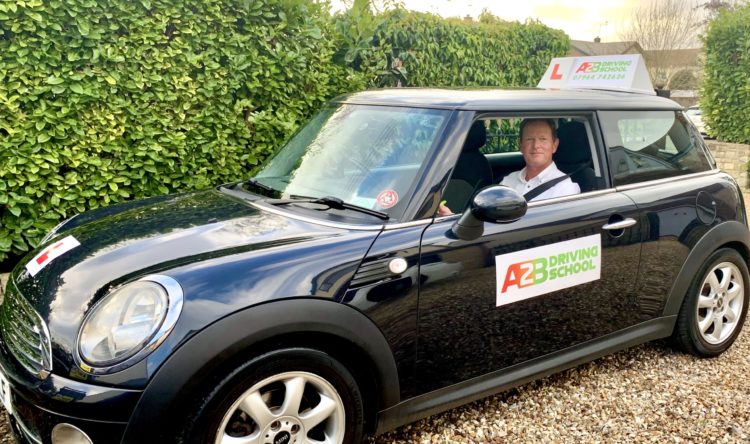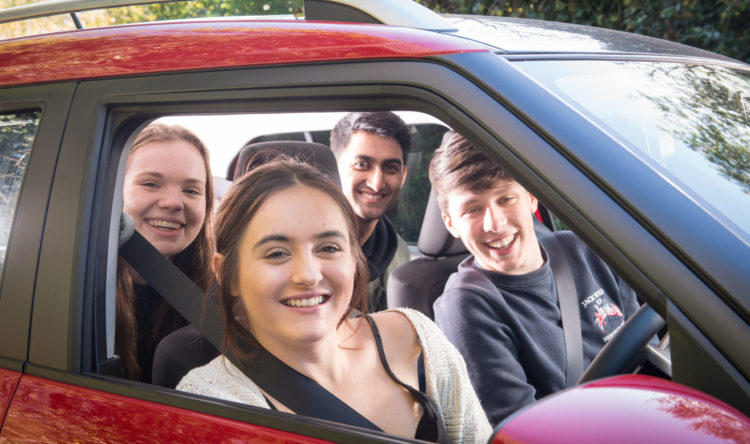Motorways
Motorway driving teaching tips & lesson plan
June saw what has been regarded as the long overdue introduction of motorway driver training to the portfolio of practical driving lessons for the learner driver. However, in some parts of the country, motorway access will be several hours away. In these cases, where an extended lesson is not possible, you may consider using some dual carriageways, which can be very similar in character: high-speed, multi-lane, with slip roads on and off (see last month’s article). The aim of this month’s teaching plan is to give the new driver confidence and relate defensive driving techniques to motorway driving. All the driving skills required can be efficiently delivered using the ‘Smith System’.
STAGE OF ABILITY
- Test Standard and Newly Qualified Drivers.
Recap & Review
- the driving skills needed for successful “Motorway Driving”
- the meaning of “positive driving” .
CORE OF THE LESSON
What needs to be reviewed and
prioritised?
- Eyesight & Driving Licence checks (if necessary)
- Familiarity with vehicle controls (might be customer’s vehicle)
- Defensive driving – Reducing blameworthy risk on the road
- Positive driving – Driver performance, not vehicle performance.
SKILLS DEVELOPMENT
Motorway topics include:
- Absence of a number of hazards
- Positive driving skills
- Speed and collisions
- Review of driving skills, especially dual carriageways.
Route Planning to:
- ensure that your new driver has the maximum opportunity to learn and apply these skills
- manage the time effectively and pre-determine any periods of independent driving
- ABSENCE OF A NUMBER OF HAZARDS
Motorways are the safest roads because of the absence of:
- pedestrians and cyclists
- oncoming traffic and vehicles turning right
- roundabouts
Coaching Exercise 1
Ask your student:
what makes motorway roads different from all other roads?
Confirm that the absence of pedestrians, cyclists and oncoming and right turning traffic results in fewer collisions, making this kind of road the safest. While there are some close similarities with driving on high speed dual carriageways, some differences will need introduction/consideration.
Ask your student what these are, and their answers should include:
- Slip roads for joining and leaving the motorway, that are not always present on multi-lane dual carriageways
- The limited opportunities for refuelling and refreshments
- The dangers of stopping on the hard shoulder in an emergency
- The legal restrictions on vehicles permitted to use the motorway.
- POSITIVE DRIVING SKILLS – DEFENSIVE DRIVING:
- effective observation and
- good anticipation.
Introduce this section as:
- Joining the motorway (Use of the Mirror(s), Signal Manoeuvre routine)
- Driving along the motorway (Use of Speed, Positioning and Lane discipline, Overtaking)
- Leaving the motorway (Use of the Mirror(s), Signal Manoeuvre routine).
Coaching Exercise 2
Risk Assessment
Ask your student to list all the possible risks affecting the driver’s ability to concentrate at motorway speeds in varying levels of traffic density.
Answers can include:
- Monotonous driving conditions
- Feelings such as tiredness, stress or mood.
Consider with your student how these issues might be overcome, such as journey planning and taking enough breaks.
Ask your student:
- What vehicle checks need to be made before driving on a motorway?
- What to do if you need to pull up on the motorway’s hard shoulder, because of a vehicle breakdown?
- SPEED AND COLLISIONS
Because of the high speeds involved, motorway collisions tend to be more serious. Developing accuracy in assessing road speeds and stopping distances under fast moving traffic conditions can take some time, depending on the student’s own ability and confidence.
New drivers should:
- Drive within their own ability and competence
- Steadily develop their experience to become comfortable and confident with increased speed ranges.
Coaching Exercise 3
Preparing for speed:
High speed means that hazardous situations can develop quickly, meaning that we travel further before we respond. Ask your student the best way to prepare for practice.
- REVIEW OF DRIVING SKILLS, ESPECIALLY DUAL CARRIAGEWAYS
Reinforce the appropriate skills covered in the previous topics, including dual carriageways
- Joining motorways from slip roads
- Good anticipation – reading the road ahead
- Continual re-assessment of the movement of other vehicles
- Separation distances
- Safe overtaking, including the different speed limits for articulated goods vehicles and cars towing caravans or trailers.
Coaching Exercise 4
Using the Smith System
Interact with the student on the move using the ‘Smith System’ (Five good driving habits). For example:
- Look well ahead (what can be seen, what can’t be seen, what can we reasonably expect to happen?)
- Move the eyes (checking mirrors, comparing view in interior mirror with both exterior mirrors)
- Keep space (from vehicles in front and avoid being three abreast)
- Spot the problems (fixed features such as junctions – joining and exiting, moving
features such as different types of vehicle and environmental features such as the condition of the road surface)
- be seen (on faster roads, the use of headlights and signals in plenty of time).
ADDITIONAL REFERENCE
More specific information is provided in the National Standard for driving cars Element 3.1.4: Drive on motorways and dual carriageways.
PERFORMANCE STANDARDS
You must be able to:
- join a motorway or dual carriageway safely and responsibly from the left or the right
- leave a motorway or dual carriageway safely and responsibly to the left or the right
- drive in the most suitable lane
- allow for other road users joining or leaving the motorway or dual carriageway
- change lanes safely and responsibly.
KNOWLEDGE AND UNDERSTANDING REQUIREMENTS
You must know and understand:
- how to join a motorway or dual carriageway, safely and responsibly, from traffic light controlled or uncontrolled slip roads
- how to leave a motorway or dual carriageway safely and responsibly, including the need to position yourself well in advance to allow other road users enough time to react
- joining or leaving a motorway or dual carriageway safely in a safe and systematic way
- that you may not stop on a motorway except in an emergency
- when and for what purposes you are allowed to use the hard-shoulder
- that you mustn’t pick up or set down anybody, or walk on a motorway, except in an emergency
- that you mustn’t cross the central reservation, or drive against the traffic flow on a motorway or dual carriageway, unless directed to do so by an authorised person or traffic signs
- the rules that apply when using a motorway or dual carriageway
- that some stretches of motorway may have local, active traffic management (smart motorways or managed motorways) control systems installed, which will change speed limits or the direction of flow in particular lanes, and that it is vital to obey the instructions given by such systems
- the need to scan well ahead on the approach to junctions to make sure you are aware of:
− other road users joining or leaving
− queuing traffic
- the correct use of hazard warning lights
- the risks posed by drivers of left-hand-drive vehicles, in particular large goods vehicles. It may well be worth pointing pupils and parents to a new free online learning resource from Highways England (with input from DIA, DfT and DVSA), specifically launched to coincide with the change in the law allowing learners on motorways, providing advice and help about high speed Dual Carriageways and Motorways:







